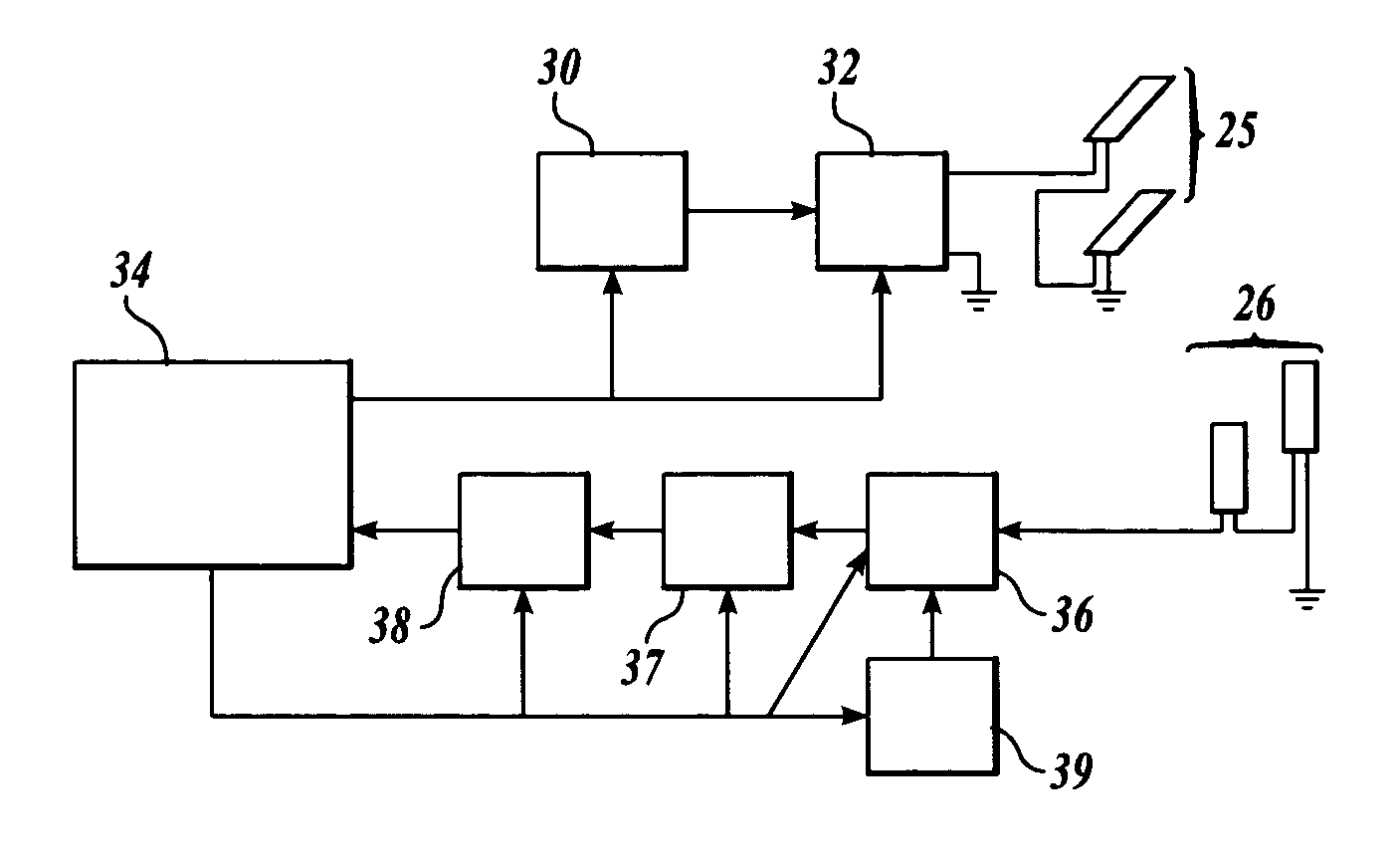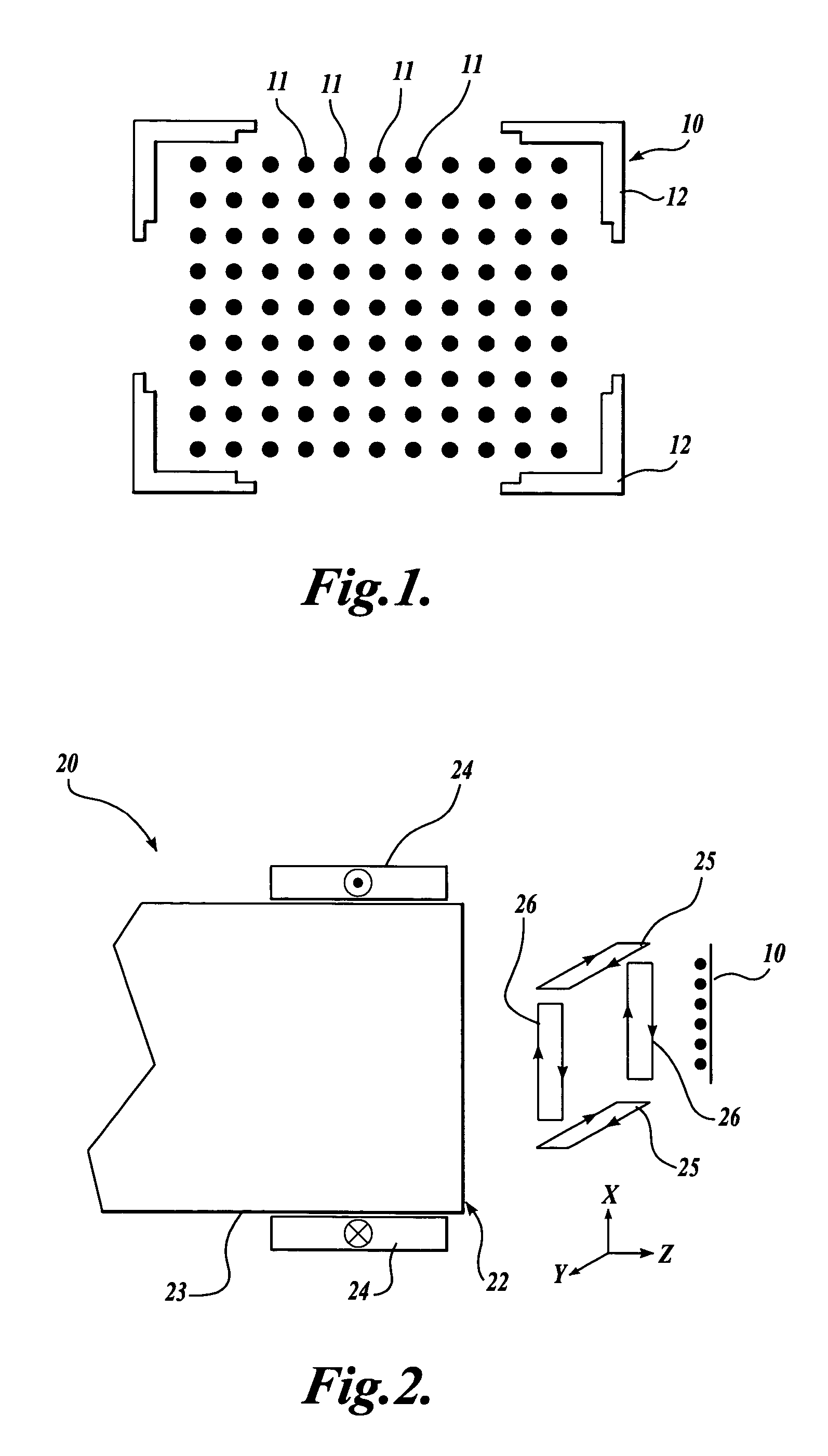Method and system for producing and reading labels based on magnetic resonance techniques
a magnetic resonance and label technology, applied in the field of labeling items, can solve the problem that the read-out method is correspondingly more complicated than the one used for reading
- Summary
- Abstract
- Description
- Claims
- Application Information
AI Technical Summary
Benefits of technology
Problems solved by technology
Method used
Image
Examples
first embodiment
[0028] Various methods are possible to form different particles from materials so that the resulting different particles will have different magnetic resonance characteristics, respectively. In a method of the present invention, one may select the types of nuclei with magnetic moments or quadrupole moments (for example, protons, 13C, 35Cl, etc.) to be detected, so as to prepare the particles having specific magnetic resonance characteristics. In this embodiment, the number of different materials to be used to form the particles is limited by the number of nuclei with magnetic or quadrupole moments to be detected.
second embodiment
[0029] In a method of the present invention, one may select compounds containing nuclei with different T2's (spin-spin relaxation times), so as to prepare the particles having specific magnetic resonance characteristics. The T2 property is typically used to distinguish different tissue types in magnetic resonance imaging (MRI) for medical diagnosis.
third embodiment
[0030] In a method of the present invention, one may select compounds with different chemical shifts or chemical shift patterns. (The resonance frequency can be shifted for nuclei in different positions in a molecule and is different for different types of molecules, which is called “chemical shift”).
[0031] In the fourth embodiment of a method of the present invention, one may use compounds with different quadrupole resonance frequencies. Briefly, quadrupole resonance is similar to magnetic resonance, except that an external magnetic field is not used. Some nuclei have a quadrupole magnetic moment, and a resonance or splitting of energy level is caused by an electric field at the position of the nucleus. The fourth embodiment has the advantage of not requiring an external magnetic field for the purpose of detection. It also has the advantage that it would permit making a large number of particles having different NQR frequencies simply by making different chemical compounds using an...
PUM
 Login to View More
Login to View More Abstract
Description
Claims
Application Information
 Login to View More
Login to View More - R&D
- Intellectual Property
- Life Sciences
- Materials
- Tech Scout
- Unparalleled Data Quality
- Higher Quality Content
- 60% Fewer Hallucinations
Browse by: Latest US Patents, China's latest patents, Technical Efficacy Thesaurus, Application Domain, Technology Topic, Popular Technical Reports.
© 2025 PatSnap. All rights reserved.Legal|Privacy policy|Modern Slavery Act Transparency Statement|Sitemap|About US| Contact US: help@patsnap.com



